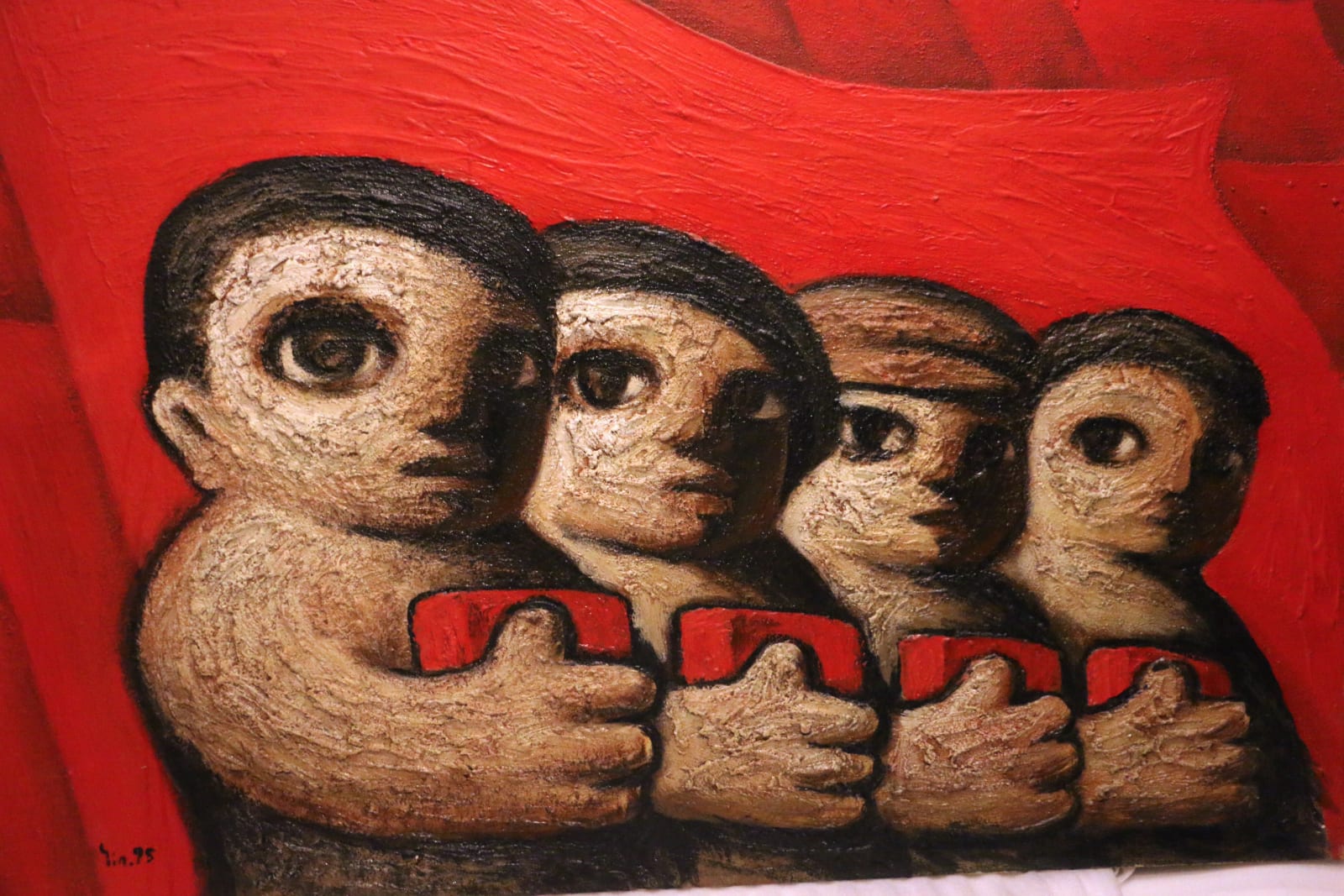Yin Xin
4 communists with red flags, 1995
Acrylic on canvas
99 x 130 cm
Yin Xin, a painter hailing from China's far-western province of Xinxiang, was just seven years old when the Cultural Revolution commenced in his homeland. This tumultuous period left an indelible...
Yin Xin, a painter hailing from China's far-western province of Xinxiang, was just seven years old when the Cultural Revolution commenced in his homeland. This tumultuous period left an indelible mark on the young artist, prompting him to reject the constraints of social realism—a style enforced during his time at Art College. While his peers delved into propaganda graphic art, Yin Xin plotted his escape into expressionism, disillusioned by the endless still lives and rigid conventions of his education. He pursued formal education at Xinjiang Normal University of Fine Arts before teaching there for two years. Further studies took him to the Xi'an Academy of Fine Arts and the Royal Melbourne Institute of Art, where he honed his craft and developed his distinct style.
Set against the backdrop of the Cultural Revolution (1966-1976), the painting Four Communists with Red Flags evokes memories of that chaotic era, where people shared identical appearances and the widespread habit of reading the Little Red Book—a collection of selected works by Chairman Mao. The artwork carries a cynical tone, and its vibrant use of red symbolizes the chaos, violence, and overwhelming presence of political ideology.
His works have also been included in the exhibition 'Botticelli Reimagined' held at the Victoria and Albert Museum (V&A) which ran in 2016. It explored the enduring impact of the Florentine painter Sandro Botticelli from the Pre-Raphaelites up to today.
Set against the backdrop of the Cultural Revolution (1966-1976), the painting Four Communists with Red Flags evokes memories of that chaotic era, where people shared identical appearances and the widespread habit of reading the Little Red Book—a collection of selected works by Chairman Mao. The artwork carries a cynical tone, and its vibrant use of red symbolizes the chaos, violence, and overwhelming presence of political ideology.
His works have also been included in the exhibition 'Botticelli Reimagined' held at the Victoria and Albert Museum (V&A) which ran in 2016. It explored the enduring impact of the Florentine painter Sandro Botticelli from the Pre-Raphaelites up to today.



